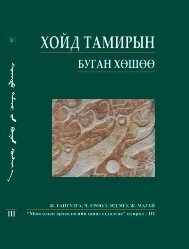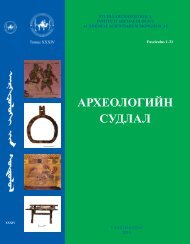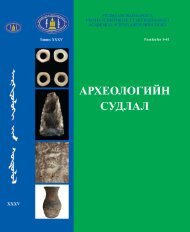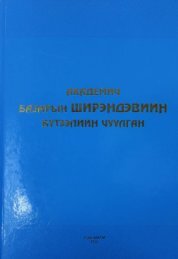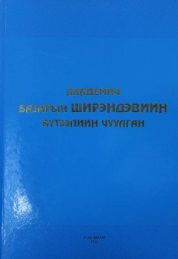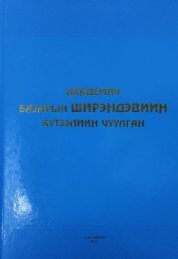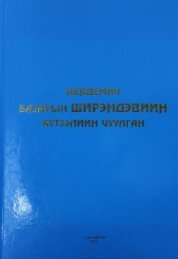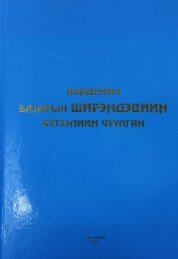2
You also want an ePaper? Increase the reach of your titles
YUMPU automatically turns print PDFs into web optimized ePapers that Google loves.
The impact of the Great October Revolution was naturally appreciated by the<br />
progressive representatives of the arats, such as Sukhe-Bator, Choibalsan, Lossol,<br />
Doksom, Dambadorj, Buyan-Nemekh and others.<br />
Under their ledership the arats were organized politically for the first time.<br />
The political organization – first revolutionary circles, and later the People`s<br />
Party having ecievd the most friendly ideological and moral support from the<br />
international communist and working class movement, was able despite the<br />
country`s economic and cultural backwardness and the influence of the Lamaist<br />
church, to organize the arats for an armed uprising and ensured the taking over<br />
of political power by the people, by applying the methods and forms of struggle<br />
of a proletarian revolution to the specific conditions of the country. Members of<br />
the Central Committee of the People`s Revolutionary Party and the Provisional<br />
Government, regiment and sub-unit commanders of the People`s Army and other<br />
activists made a valuable contribution to the triumph of the revolution.<br />
All the foregoing is quite analogous to the way in which progressive people<br />
in many countries accepted the ideas of the 1917 Russian Socialist Revolution.<br />
The famous revolutionary-democrat Sun-Yat-sen who was living fighting in the<br />
period of a growing national-liberation movement of the Chinese people at the<br />
beginning of the century, revisd his former views under the influence of the<br />
October Revolution and put forward his Three People`s Principles, expressing<br />
3 political fundamentals. This was a natural historical phenomenon. The Pre-<br />
October periods in Russia were also full of similar examples of the influence of<br />
advanced revolutionary ideas. There is no need to review numerous examples of<br />
the mutual connection and influence of social revolutions in Holland in the XYI<br />
century; in England in the XYII century and in France in the XYIII century. We<br />
cannot deny the historical fact on the influence of the French revolution at the<br />
end of the XYIII century, which predetermined the further development of new<br />
progressive and bourgeois forms of organization in most countries of Europe:<br />
Belggium, Germany, Italy and so on.<br />
The same could be said about the great response to the Paris Commune of<br />
1871 in the social mentality and political life of many European countries. In the<br />
light of the repeated facts of history, the groundlessness of certain authors, who<br />
regard this natural historical development as something imposed from outside of<br />
as exported revolution is obvious. Our honourable colleague, professor Lattimore<br />
was quite correct in stating that the Mongolian People’s Revolution was not<br />
accomplished exclusively from outside, as some authors assume 766 .<br />
The Mongolian Revolution, like other revolutions victorious in countries with<br />
pre-capitalist relations, is a component part of the general world revolutionary<br />
process. It completely confirms the foresight of the great thinker, V.L. Lenin on<br />
the historical inevitability of the merging of socialist revolutions in the advanced<br />
countries with the national liberation democratic movement in the colonial and<br />
dependent countries.<br />
766<br />
O. Lattimore, Nomads and Commissars Mongolia revisited p.89.<br />
389




